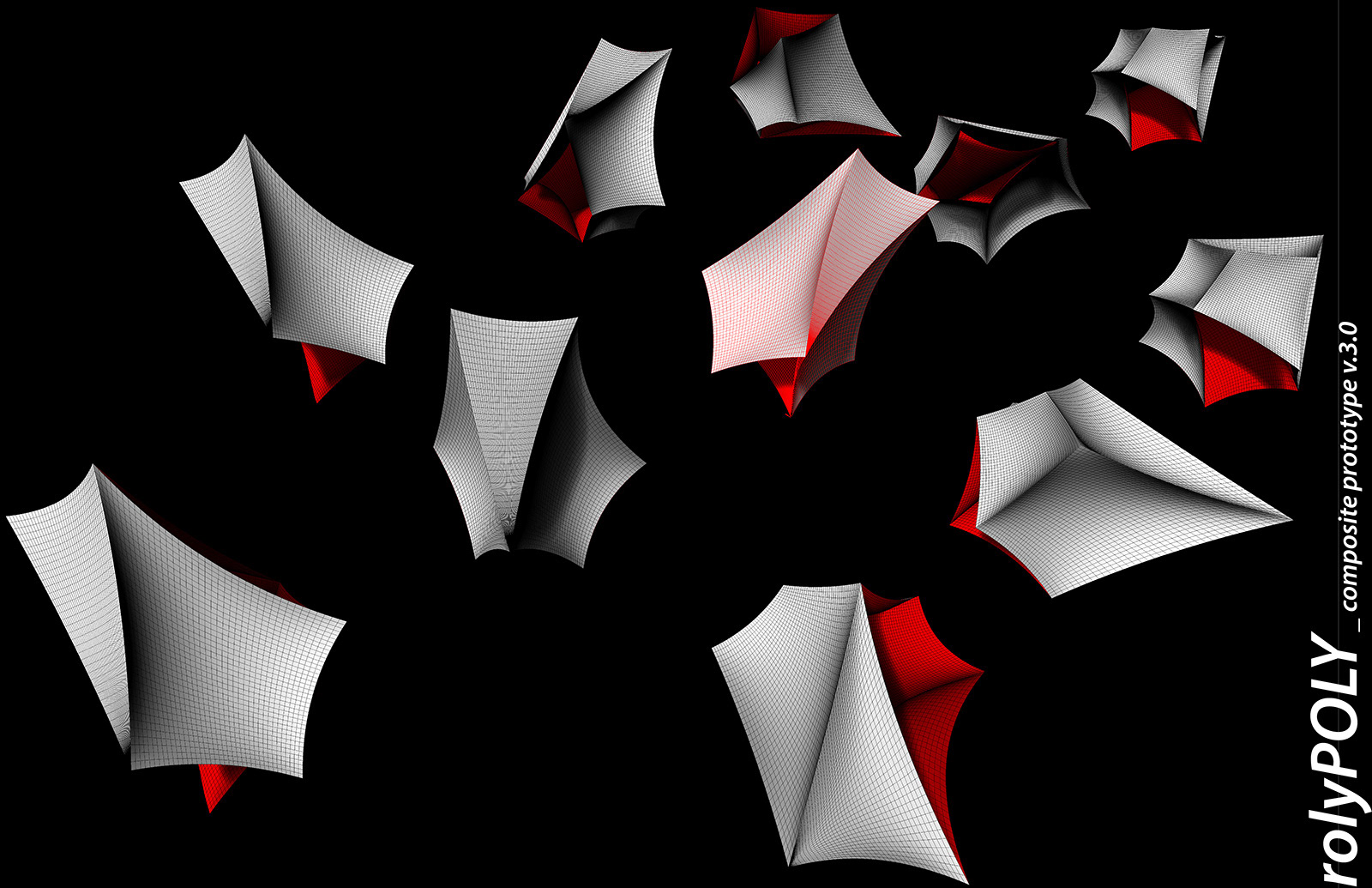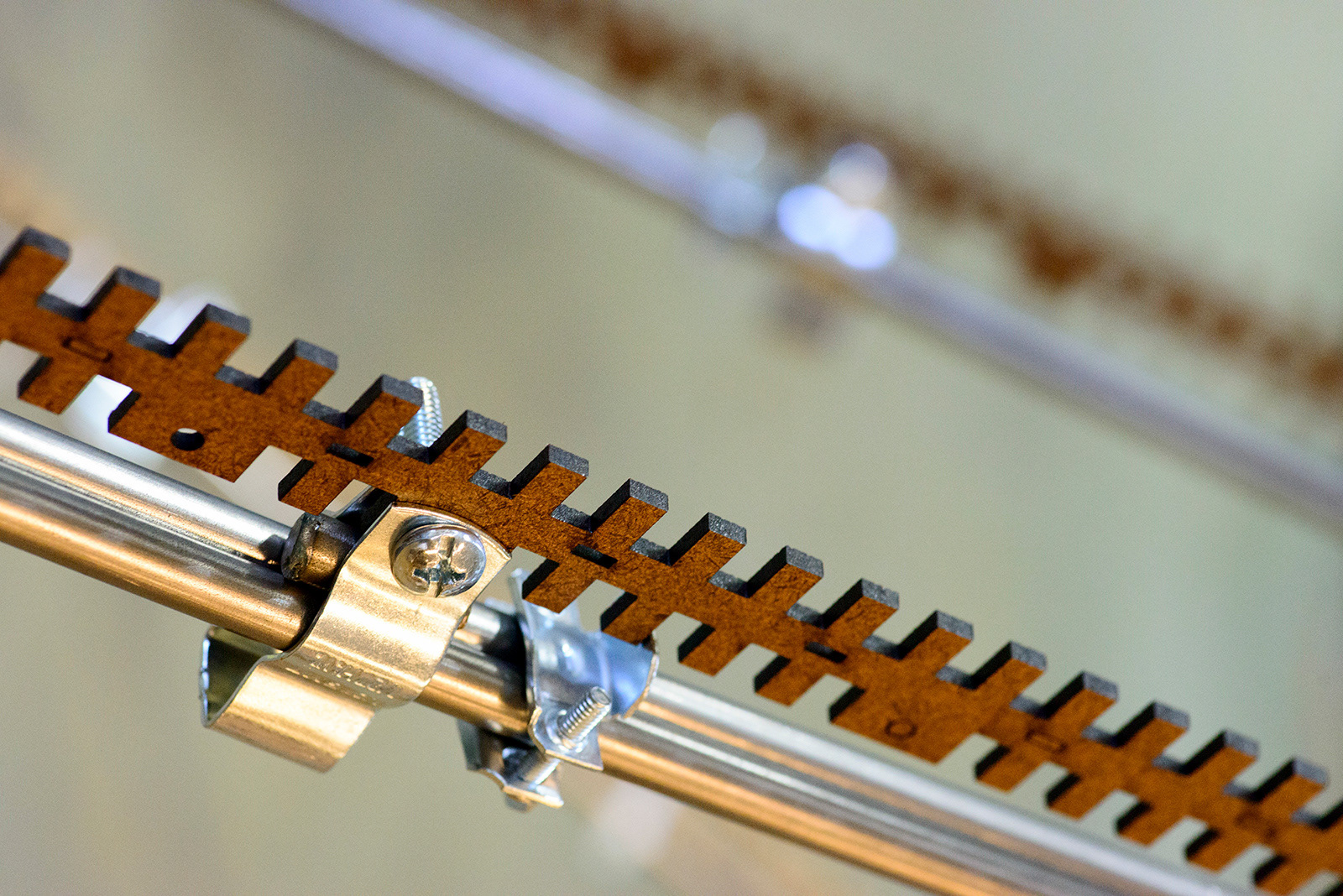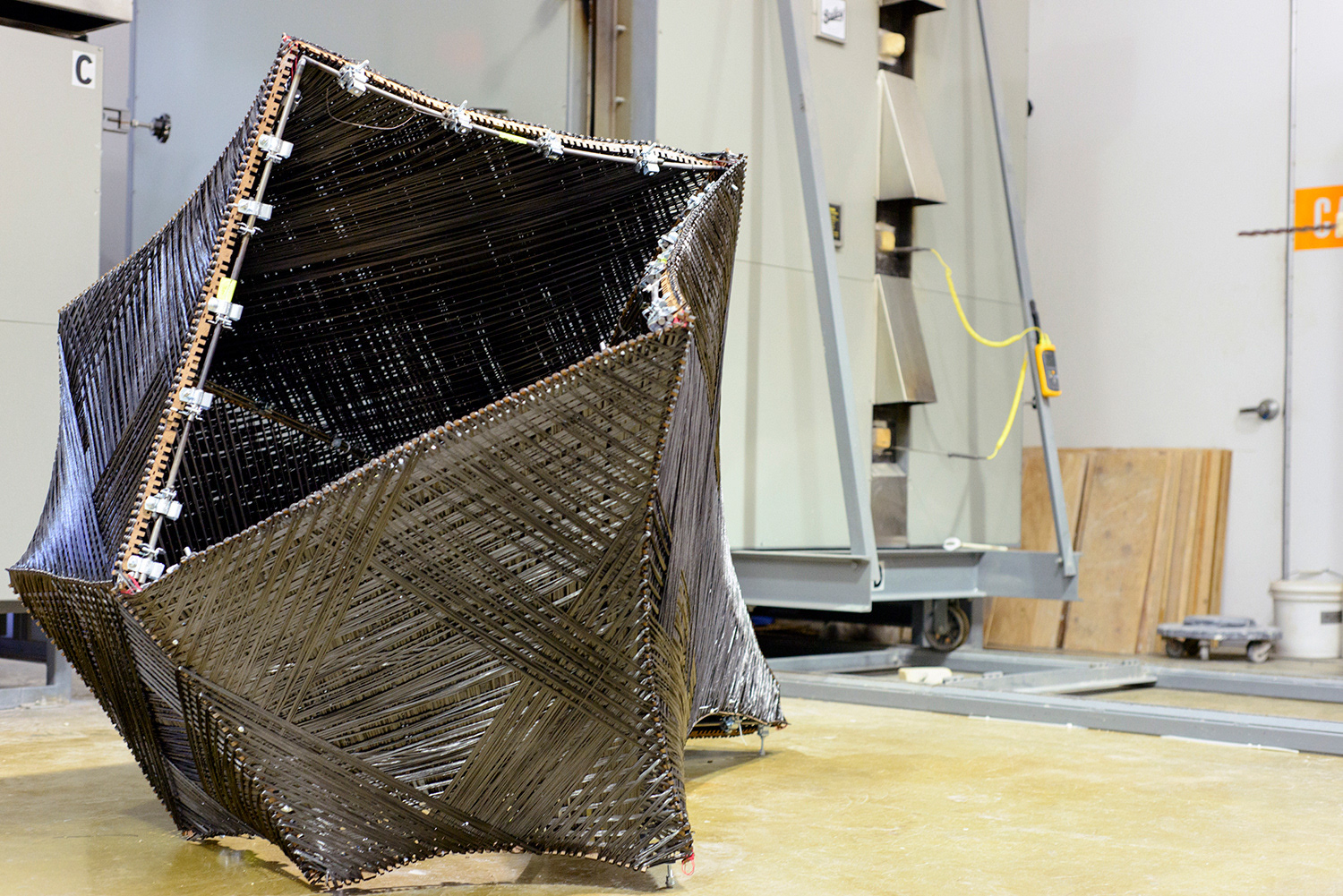rolyPOLY Occupied
PRINCIPAL INVESTIGATORS: Andrew John Wit + Simon Kim
STUDENT RESEARCHERS: Aidan Kim, Junghyo Lee, Yue Chen + Daniel Kin Ho Lau (Composite Fabrication)
COLLABORATORS: Tim Rusterholz (Steel Fabrication), John Williams (Carbon Fiber Baking)
PROJECT STATUS: Complete
PUBLICATIONS:
1. Proceedings from the 2016 TxA conference in San Antonio, Tx. "Craft-Based CFRP Systems for Rapidly Deployable Architectures."
2. Proceedings from the 2016 ACADIA conference in Ann Arbor, Mi. "Composite Systems for Lightweight Architectures. Case studies in large-scale CFRP winding."
3. 3D Printing and Additive Manufacturing Volume 3, Issue 1. "Craft Driven Robotic Composites." Cover Story.
2. Proceedings from the 2016 eCAADe conference in Oulu, Finland. "rolyPOLY: A hybrid prototype for digital techniques and analog craft in architecture."
3. Proceedings from the 2016 ACSA Cross-Americas conference in Santiago, Chile. "rolyPOLY: A hybrid prototype for digital craft."
EXHIBITIONS:
1. Tyler School of Art, Philadelphia PA;
2. Design Week Ft. Wayne, Ft. Wayne IN.
DESCRIPTION: The manipulation of weaving as a traditional industrial process as a craft, and as a numerically controlled robotic winding procedure, was examined and evaluated through the construction of an architectural-scale monocoque shelter. This wound carbon fiber prototypical structure represents a production method for quick deployment,flexibility in form, and lightness of material. The implications of this case study, and its future goals are to be explored in relationship to the rapid evolution of robotic fabrication and architectural design while being tested through the traditional craft of hand winding as a direct translation of computational information. The methodology and means in which the results are assessed are presented here. What is a related and beneficial by-product is the investigation of uniform and continuous winding that fulfills the technical requirements of monocoque and span, while allowing for additive layers of artistry or optical effects (figure 1). The oft-converging fields of craft and technology produce novel methods and tools for design, as technology adapts to unforeseen artistic impulse. Simultaneously, these new methods also require a reevaluation of both how art and architectural projects are evaluated.
rolyPOLY on display at the Tyler School of Art
rolyPOLY on display at the Tyler School of Art
rolyPOLY CFRP detail
rolyPOLY on display at the Tyler School of Art
rolyPOLY on display at the Tyler School of Art





